From our perch, we see high-priced 406-MHz ELT interest bottoming out. Maybe its because Transport Canada has backed off on an initial threat of mandating 406 MHz beacons for any aircraft operating in Canadian airspace-at least for now. This mandate was a driving, if shallow, motivation for U.S. operators to drop a couple of grand on new ELT technology. But even without the Canadian mandate, going 406 is something we all should plan for at some point. Many owners are in denial that distress signals from old 121.50 MHz beacons arent satellite-monitored anymore, cant be tied with on-board GPS for transmitting wreckage coordinates or even that the device in the tail might be over 40 years old. There are a handful of good reasons to invest in a 406 ELT and some well-worn excuses not to. Maybe you always fly IFR, or never in the sticks, or always in earshot of a listening control tower. But given the improvements in 406 technology, we think the investment is worthy. 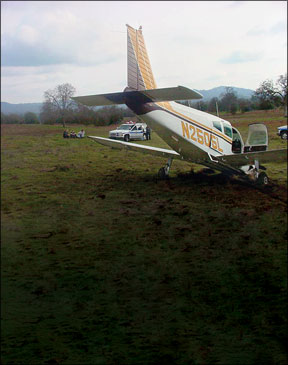
Disassembly Required
The good news is that beacon prices are falling and there are more offerings. The bad news is that ELT installs are pricey projects. Owners are shocked to see lopsided quotes where shop labor far exceeds the cost of the system. Were not talking complicated avionics work here. Instead, its the grunt-work that tags along with many ELT installations that kills the deal on more than a few proposals.
The issue is that 406 beacons require an ELT remote activation control switch (to be located within easy reach of the pilot). Aside from the instrument panel work thats required for mounting the switch, there’s often new wiring that needs to be connected between the beacon and that switch even in ELT upgrades.
Unfortunately, the wiring effort to connect that remote control switch with the transmitter thats all the way in the back of the aircraft often requires removal and then reinstallation of the aircraft interior. Owners underestimate this challenge. Some interiors are old, brittle and cracking. Others are tightly-sewn custom designs not intended for easy removal. In some panels packed with gear, there might not be room for the switch. And even if there’s an existing switch on the panel, it might not be the same size as the new 406 switch. The wiring is seldom compatible.
Some manufacturers like KANNAD and ACK are attempting to tame this dragon with universal remote switches. More on that later. Our advice is to coordinate an ELT upgrade with maintenance intervals and other avionics projects that might require interior disassembly. And even if you decide to hold off on a full installation, your shop can always route ELT wiring through the interior while its opened up. New interior upgrades are perfect timing for this easy task.
As with any other system, the antenna effort shouldnt be underestimated. Pressurized aircraft could need additional approval and definite expertise. Faster airframes might require high-speed antennas that will cost more than the standard whip that come with most GA ELTs.
Since many beacons offer an optional GPS interface for more precise transmit data (as tight as 100-foot accuracy with a response time of approximately 10 minutes according to manufacturers) avionics shops and not maintenance shops need to be involved in the project.
This means the radio stack will need to be disassembled to access the connectors on the GPS. For models like Garmins GNS 430, for example, this could mean several hours worth of additional labor to wire into a serial output port. Hopefully the
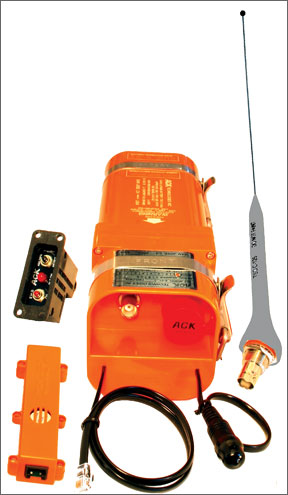
previous installer pre-wired spare outputs for future connection. don’t assume the install will include a GPS interface. you’ll need to ask for it.
ACK E04
The long awaited ACK Avionics model E04-406 still waits for final certification. With rumors flying, we recently had a long talk with ACK President Mike Akatiff for the real story surrounding the much-delayed E04. Frankly, we walked away feeling sorry for him and his product stuck in the testing process.
The 406 MHz E04 and direct-replacement E04R system has been approved for use in Canada as we’ll as in Europe so its clearly a sound product. And as we go to press, ACK expects U.S. approval in a matter of weeks although weve heard that before and ACK is tired of saying it. The system already has TSO-approval, but the waiting game is for final COSPAS/SARSAT approval, pending years of testing accomplished by the U.S. Army. Apparently there have been more than a few snags in the approval/testing process. The company web site reveals stacks of E04 beacons ready to ship once the final approval is issued. ACK makes it clear that the unit has never failed any of the testing. The wait is the result of Army/COSPAS coordination.
And for consumers the wait will be worth it. Foremost is the price: A new E04 system with everything you’ll need for a new installation is $599 while the E04R drop-in replacement for an existing E01 ELT is $560. In our view, this is an excellent value, and its made even better through liberal mail-order discounting. Second is the level of modern technology built into the E04. The unit is more than a reworked 121.5 MHz E01. Instead, the circuit board includes newly designed ICs to efficiently fit into the tight chassis. The beacon outputs 13.7 watts of EIRP power on transmit. Contrast this to a measly 200mW of a 121.5 MHz model.
There’s a built-in GPS interface without the need for external converter modules. You simply wire the RS232 outputs from common GPS units to include Bendix/King, Garmin and generic NMEA format.
The unit has a five-year, TSOd lithium battery that currently
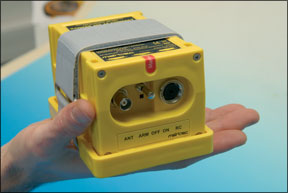
sells for $99. And when the battery is installed, the unit including mounting tray weighs less than two pounds. The standard whip antenna is rated for 260 knots and is the same footprint of the antenna used on the old E01 model so antenna installation should be easy.
So will this seemingly perfect modern ELT ever make it out of the testing process? We hope so and heres our prediction: We think the 406 MHz upgrade market will come alive once this beacon hits the market. There were over 63,000 old 121.5 MHz E01 units sold and many beg for a drop-in E04 replacement. At $560 we think the pending E04 is a solid value.
Kannad Compact
The French-made Kannad Compact model is growing legs in the U.S. market given its reasonable cost and small footprint. With mounting tray it measures 6.8 x 3.9 x 3.4 inches and weighs 1.8 pounds, including the two-element battery. Its perhaps the smallest and lightest 406 ELT.
Kannad is no stranger to the beacon world manufacturing maritime EPIRBs, PLBs and aircraft ELTs for over 20 years. The Compact uses a single battery to power beacon and the remote control switch without the need to connect aircraft power. Kannad told us the six-year battery in its unit exceeds the certification requirements by 300 percent. As a result, the beacon can operate up to 120 hours after activation (the requirement for 406 operation is 24 hours). The Compact has five watts of transmit power output on the 406 MHz band and the usual 100mW on the 121.5 MHz band.
KANNAD also attempts to tame the overall installation effort. For instance, there’s a universal mounting tray that can be configured to bolt onto existing ELT mounting holes so techs can leave the drill in the toolbox. If the existing 121.50 beacon uses a remote switch that has two-wire interconnect (many do) KANNAD offers the RC102 remote control unit that can saddle up with the existing switch wiring. The RC200 remote control is standard and uses a three-wire interconnect.
The self-testing procedure which is accomplished monthly consists of pressing the self-test button on the remote switch (or on the beacon) and status is indicated by a flashing light and buzzer. A dedicated self-test button ensures there’s no inadvertent beacon activation. Further, this remote switch is powered by the battery in the beacon, so no ships power interface is required.
Artex ME406
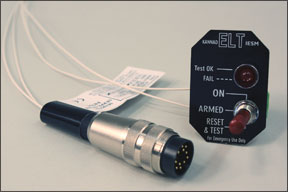
The Artex ME406 has been a brisk seller with a street price just under $1000. It was one of the first 406 models intended for light GA aircraft and there are many flavors available for varied applications. But don’t expect any shortcuts in a ME406 installation. you’ll need the provided remote control switch and new wiring from beacon to the switch as we’ll as an antenna change. The issue is Artex requires shielded wiring between the beacon and the switch, a standard that doesnt exist in many 121.5 installs. There’s no internal GPS interface module, so that functionality requires a pricey remote carried over from the transport-category market.
The ME406 ACE model is targeted for replacing ACK E01 units, using the existing remote switch and wiring. There’s an ACE version targeted at Cirrus applications complete with a 1.25-foot coaxial cable specific for a Cirrus install. Also worth mentioning is that the ME406 can drop into an existing Artex 121.5 beacon mounting tray. There’s also a helicopter flavor (HM) unit with a multi-axis G switch that can activate any which way an out-of-control helicopter smacks the ground.
All Artex units use a five-year lithium battery, thats come down in price, but is still $130.
Ameri-King AK451
The Ameri- King model AK451 is partly marketed as both an AF (automatic fixed) and AP (automatic portable beacon) since it can be removed from a Velcro strap and connected with a portable antenna thats included. So if you auger, survive and need to hike away from the crash you can take the beacon with you. Smart.
The AK451 transmits five watts of power on the 406 band and has a transmit battery life of 78 hours. The battery has a five-year replacement interval and there’s internal self test monitoring. The AK451 weighs one pound 14 ounces and measures 4.27 x 2.95 x 5.64 inches. It comes standard with a whip antenna rated for 300 knots and there are optional blade and rod antennas for jets.
The AK451 will be easily compatible with the companys AK450 121.5 beacon and comes complete with fixed and portable antenna, remote control switch, prefabricated wiring harness including coaxial cable and mounting tray. A GPS interface is standard and requires connection to a compatible GPS
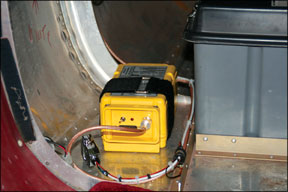
(Garmin, Bendix/King, Trimble or Apollo).
Conclusion
If youve made the decision to make the jump to a 406 MHz ELT, which one do you buy? Our simple advice is to buy the one with the least amount of install cost rather than looking at beacon cost alone. you’ll need to work with your shop on the decision. Were confident that any of the models we cover here will offer quicker rescue than any 121.5 model simply by nature of 406 technology. Its questionable whether one will perform better than another based on specs alone since the bulk of transmitter specifications need to be identical for certification purposes.
Is the remote GPS interface worth the extra wiring effort? Were on the fence. Consider, though that crash coordinates are transmitted on the first beacon burst and you wont need to wait for an orbiting satellite (which could take up to four hours). Hit accuracy is improved from approximately three kilometers to 21 meters.
If you routinely fly in the deep sticks-by which we mean rugged mountains, uncivilized desert and the Alaskan landscape, we think its worth the extra wiring effort. Keep in mind that 406 beacons also transmit on 121.5 and 243 military bands so if someone in the vicinity is listening, they might hear the transmission.
We might hang on to our wallets and wait for the ACK E04 as it promises to represent an excellent value. If you have to buy now, we have no problem recommending the KANNAD Compact for its installation simplicity and small footprint. Perhaps most important is the timing of the installation. There’s no mandate that says you have to have a 406 AF beacon, so the project can wait until the aircraft guts are accessed for other work. you’ll benefit from the cost savings.
While Larry Anglisano really dislikes crashing, he hates even more waiting several days to get found.


